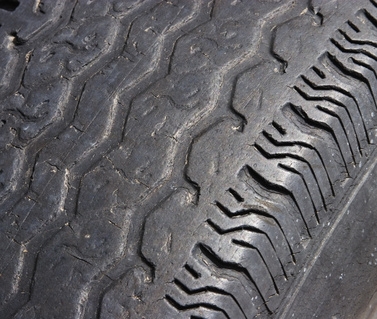
Although many specifications go into the design of an automotive suspension, most of them become permanently set during the manufacturing process. Four primary angles require adjustment on a regular basis by your mechanic to ensure your vehicle does not wear out its tires unevenly. Ideally, the alignment should take place while your car carries a load typical of what you carry as part of your normal driving habits.
If you stand in front of your vehicle and look at both wheels, you might notice that the top of both tires lean slightly inward or slightly outward. This angle is called the "camber" of the wheels; the inward lean is called "negative camber," and the outward lean is called "positive camber." Camber angles change slightly as you load your car or drive it over bumps, and it helps keep the tire tread flat on the ground. If your car needs a camber adjustment, one tire will usually show excess wear on one side of the tread.
The companion adjustment to camber, toe-in, consists of the angling of the front of the tires inward toward each other---you might think of the car as becoming "pigeon-toed." (The mechanic may also angle the tires away from each other, called "toe-out.") Most cars have a bit of toe-in to make them steer better and feel more stable at speed, but some front-wheel-drive cars perform better with a little toe-out. Problems with the "toe" of a car generally cause excess wear on both tires.
When you turn your steering wheel to turn your front wheels, the process uses two pivot points located one above the other---typically, two ball joints or a ball joint and a strut mount. However, if you stood to the side of your car and looked at these two pivots, you would rarely see them mounted with one directly above the other. Instead, the top pivot would sit slightly behind or slightly ahead of the lower one---an angle called caster. A top pivot sitting slightly behind the lower one is known as "positive caster; the top pivot sitting ahead of the lower one is known as "negative caster." Caster helps the car feel more stable at speed and helps it corner better; poor caster problems cause the car to drift or pull to one side.
Although you can have just the front end aligned, many vehicles benefit from a four-wheel alignment. Four-wheel alignments ensure that all four wheels are aiming the car in the same direction; you will sometimes hear this alignment referred to as the "thrust angle." Vehicles with four-wheel independent suspensions can really benefit from a full alignment like this; just keep in mind that four-wheel alignments are more expensive.